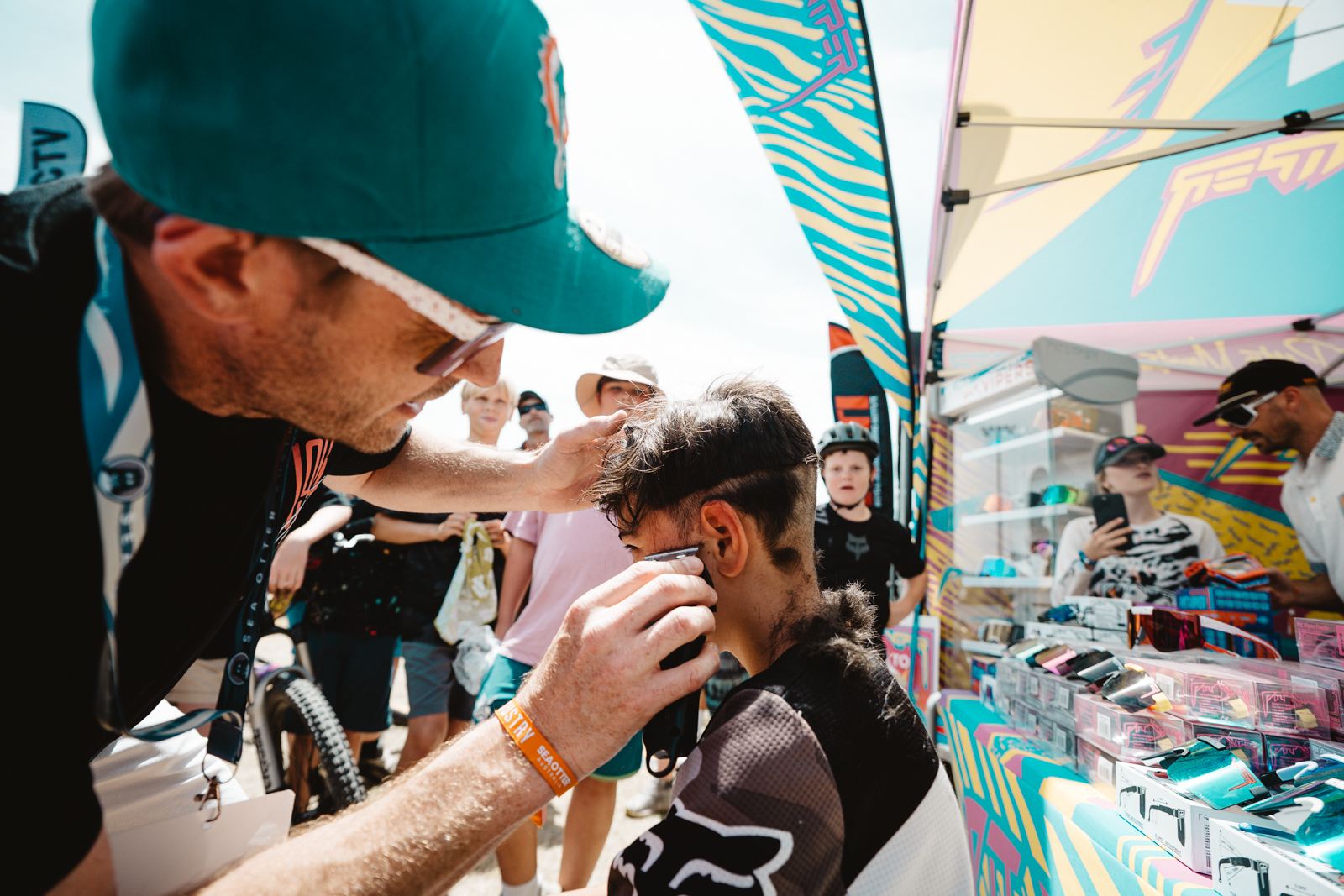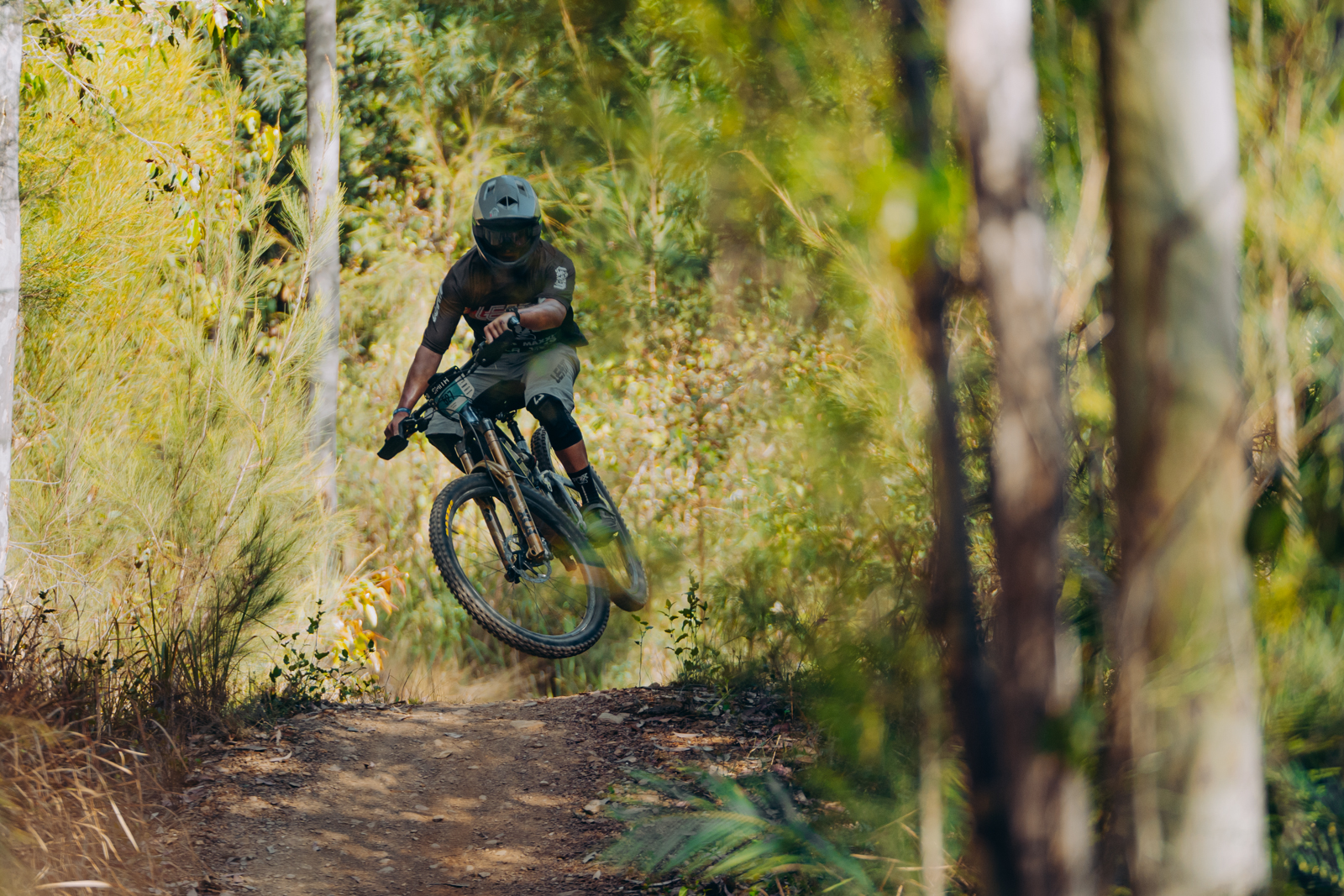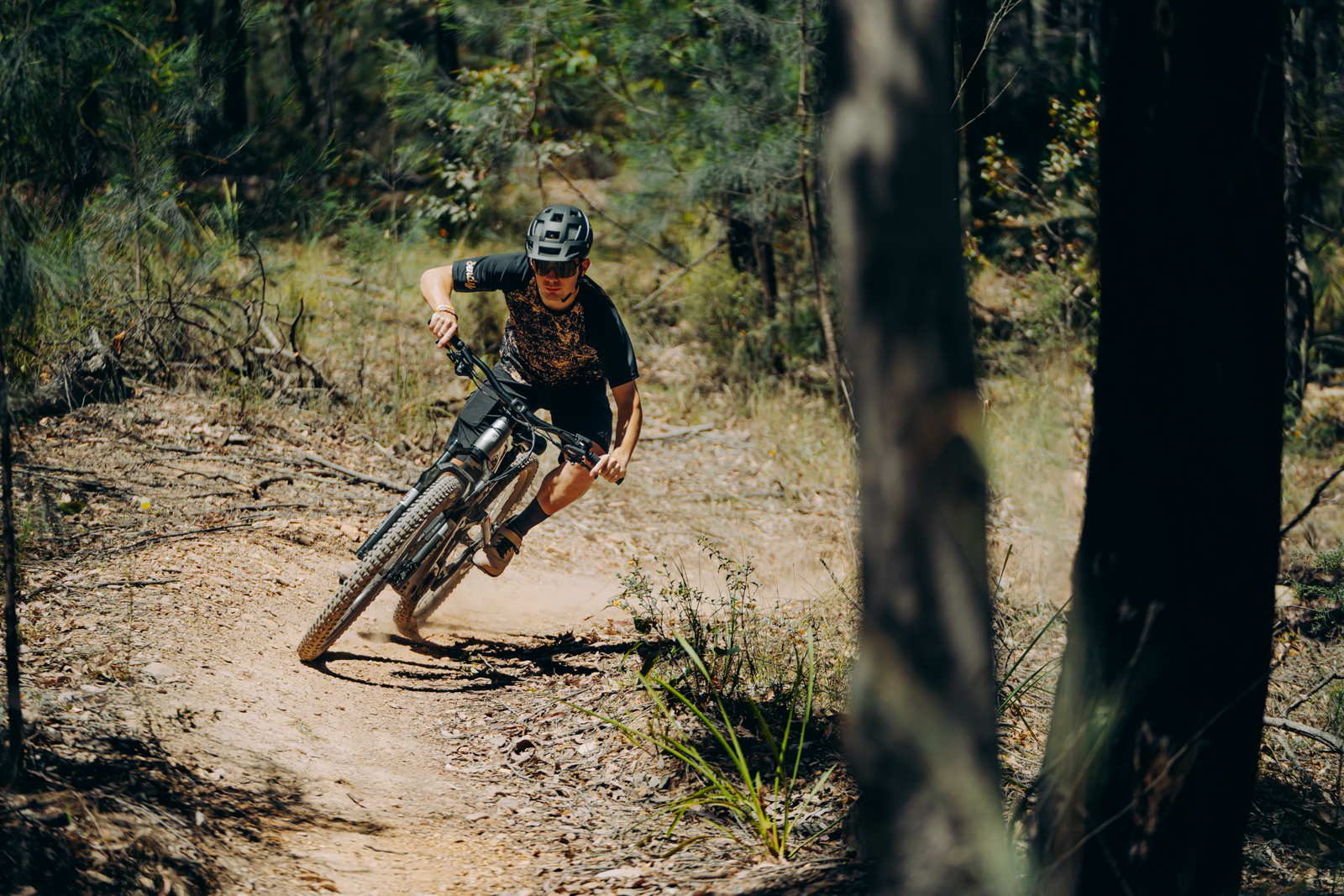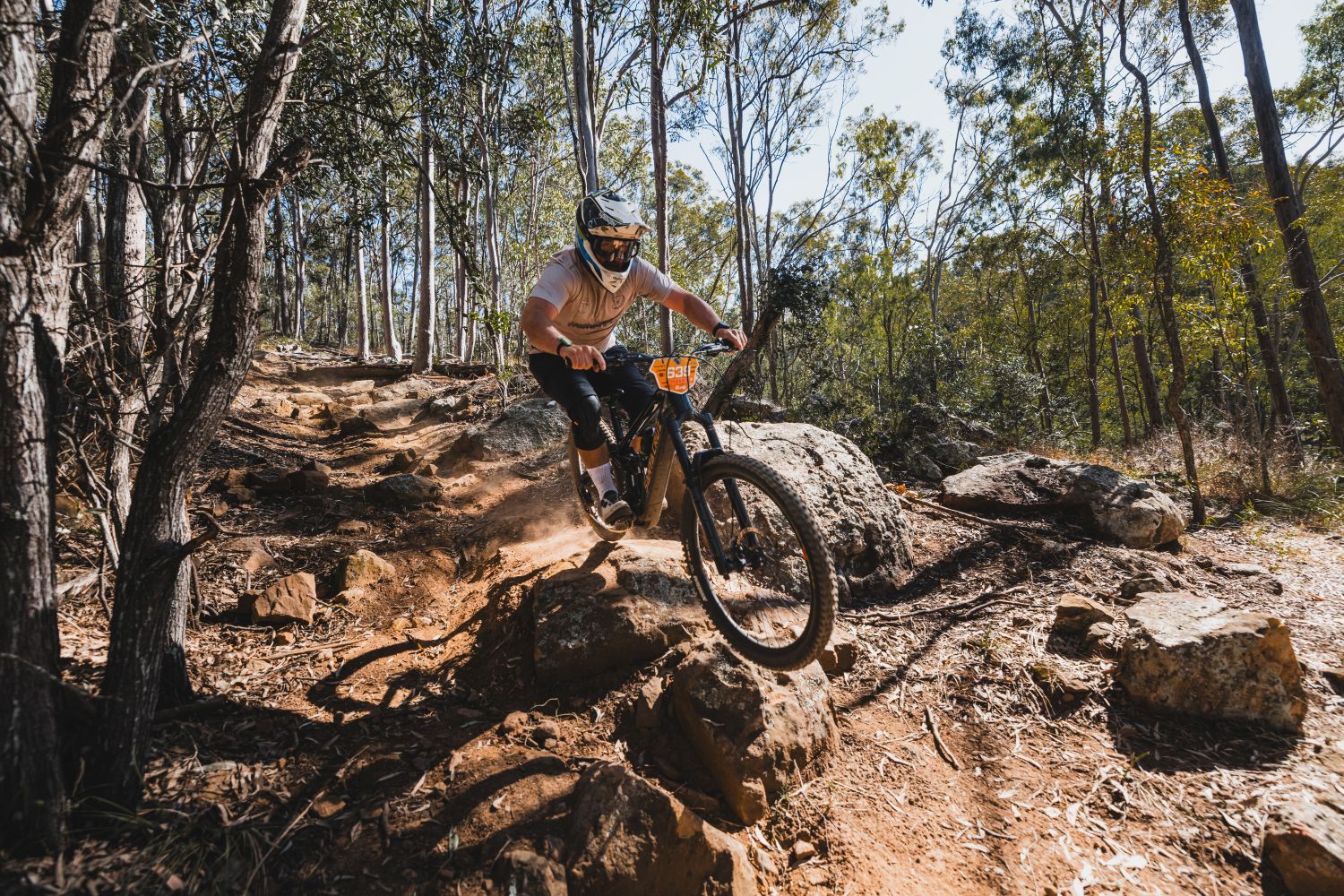TESTED: Bryton Rider 100 and 310
The GPS market isn't in a stranglehold - a point proven well by Bryton, with their well-priced and fully-featured GPS units.
Bryton Rider 100
Bryton Rider 100
Words: Anna Beck
Cycling computers have come a long way in the past 10 years with the inclusion of GPS and power functionality in addition to heart rate. The Bryton Rider 100, however, is one of the first computers offering a GPS capable cycling specific computer with ANT+ functionality at a sub-$100 price point.
Upon opening the packaging, the first thing I noticed was how basic the unit looked. The unit came with one mount (Bryton propriety fitment: no piggybacking off your existing Garmin unit here), with a range of O-rings to allow fitting to different sized bars and stems. Aethestically, the three-button unit screams function over fashion in a departure from sleek touch screens.
Fitting the unit to the bike was a simple task of selecting the right size O-ring and attaching to bar or stem as required. Easy.
In terms of setting the unit up, it's pretty much click and go, with entering the user data a simple toggling of the buttons. The three buttons are a departure from the single button and/or touch screen toggling of the market leader Garmin, however despite their less intuitive nature to that of the big G, they don't take too long to figure out.
The 1.6” LCD screen has no bells and whistles however shows all the important data, and has 1-second recording intervals. The screen display is also customisable, a feature I briefly toyed with before realising I was pretty satisfied with the data view options as they were.
With 25-hours of battery life, it took a few good marathon efforts before I managed to even half-deplete the battery, that being said it’s not such a big deal when uploading to Training Peaks or Strava; it charges via USB while computing like all good devices should.
The .FIT file also makes for ease of upload, a new feature on the current models of Brytons to enable a less stressful post-ride period. No one wants to be stressing about data uploads when you could be cranking out crowns.
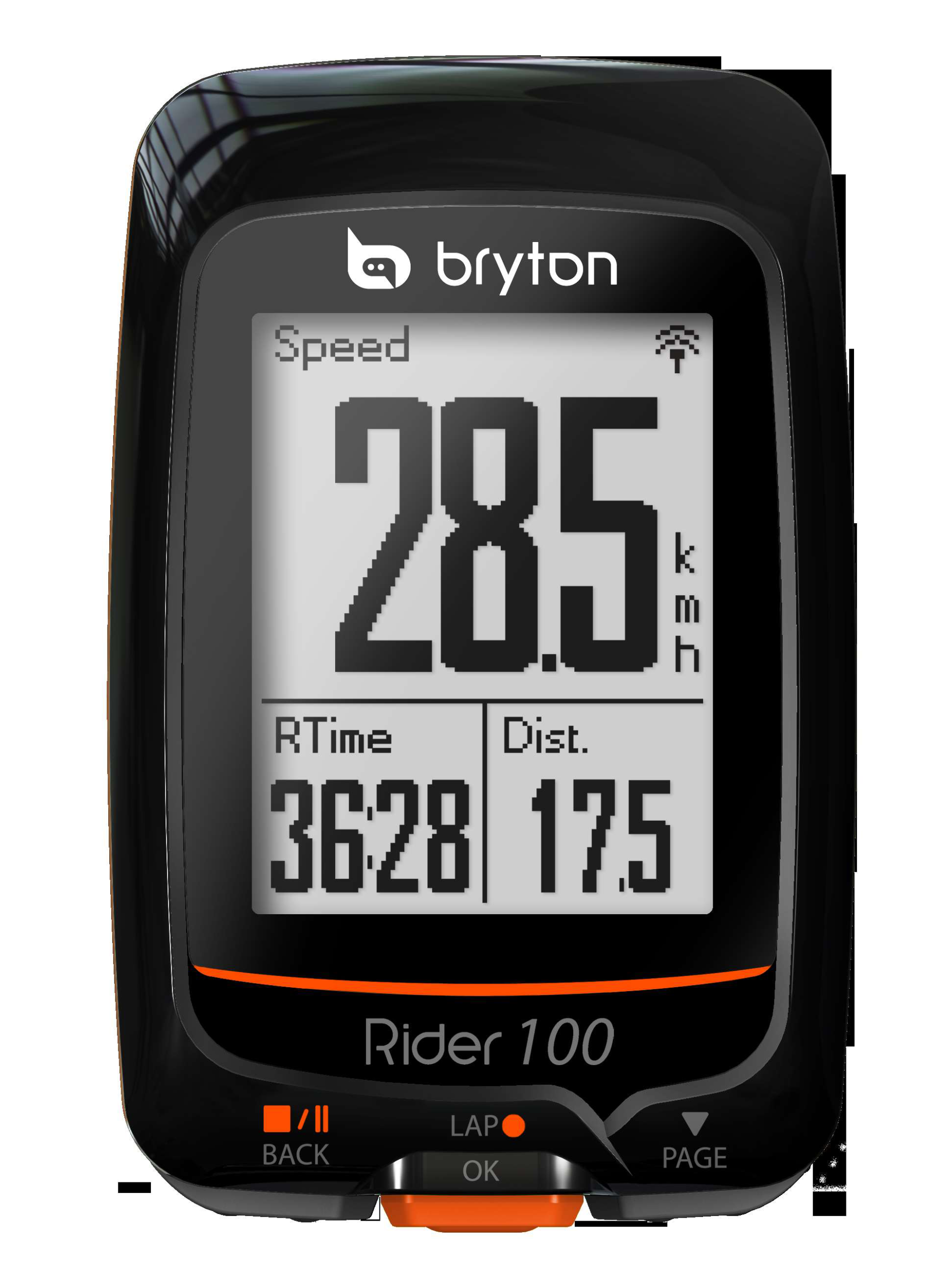
In terms of comparisons between other market leaders, I found that particularly in fast and curly singletrack, the data tended to underestimate distance. In particular at a 108km singltrack heavy race I only logged 91km with many others clocking over 100km for the same race. Understandably a little lag can be expected on extensive wiggly bits of trail but a 15% discrepancy is a little on the hefty side.
The Bryton Rider 100 is compatible with cadence, speed and heart rate sensors and pairing ANT+ sensors was a breeze; they popped up immediately and requested pairing. Paired with a speed sensor, I am sure some of the deficits in distance calculations could be ameliorated.
All in all, a satisfactory little unit. While the distance variation was a minor pique, given the $99 price tag I was pleasantly surprised with the performance of the Bryton Rider 100.
Bryton Rider 310
Words: Imogen Smith
It’s no secret that any new cycling GPS device is entering a market that’s pretty well sewn up by Garmin, and that to unstitch even a few threads, the product in question needs to have something big going for it. Wahoo, Lezyne, and Polar are all stepping up, and now Bryton, a Chinese company based in Taiwan with Aussie importers, are making head units many of the features you’re used to… for less.
I tested the Rider 310, a compact head unit with a simple digital display (no colour or touch screen here). For someone like me who loves all the data and analytics that go along with bike riding, the biggest drawcard of the Rider 310 is its power meter compatibility with a 1-second recording rate, in line with Garmin’s standard. Along with the usual functions you’d expect from a device with power recording, (the ability to set workouts, tests, myriad data fields, and so on), the Rider 310 fills a hole left in the market when Garmin discontinued the popular Edge 500 a year or so ago, all for $149.
The Bryton is pretty easy to use straight out of the box, attaching to your stem with included mount and two hardy rubber rings in less than a minute. The Bryton detected both my heart rate Bluetooth and ANT+ monitors and my ANT+ power meter without any worries, asking if I wanted to pair. I took a little extra time working out how to set up the pages and display options exactly how I like them, then there was nothing left to do but go for a ride.
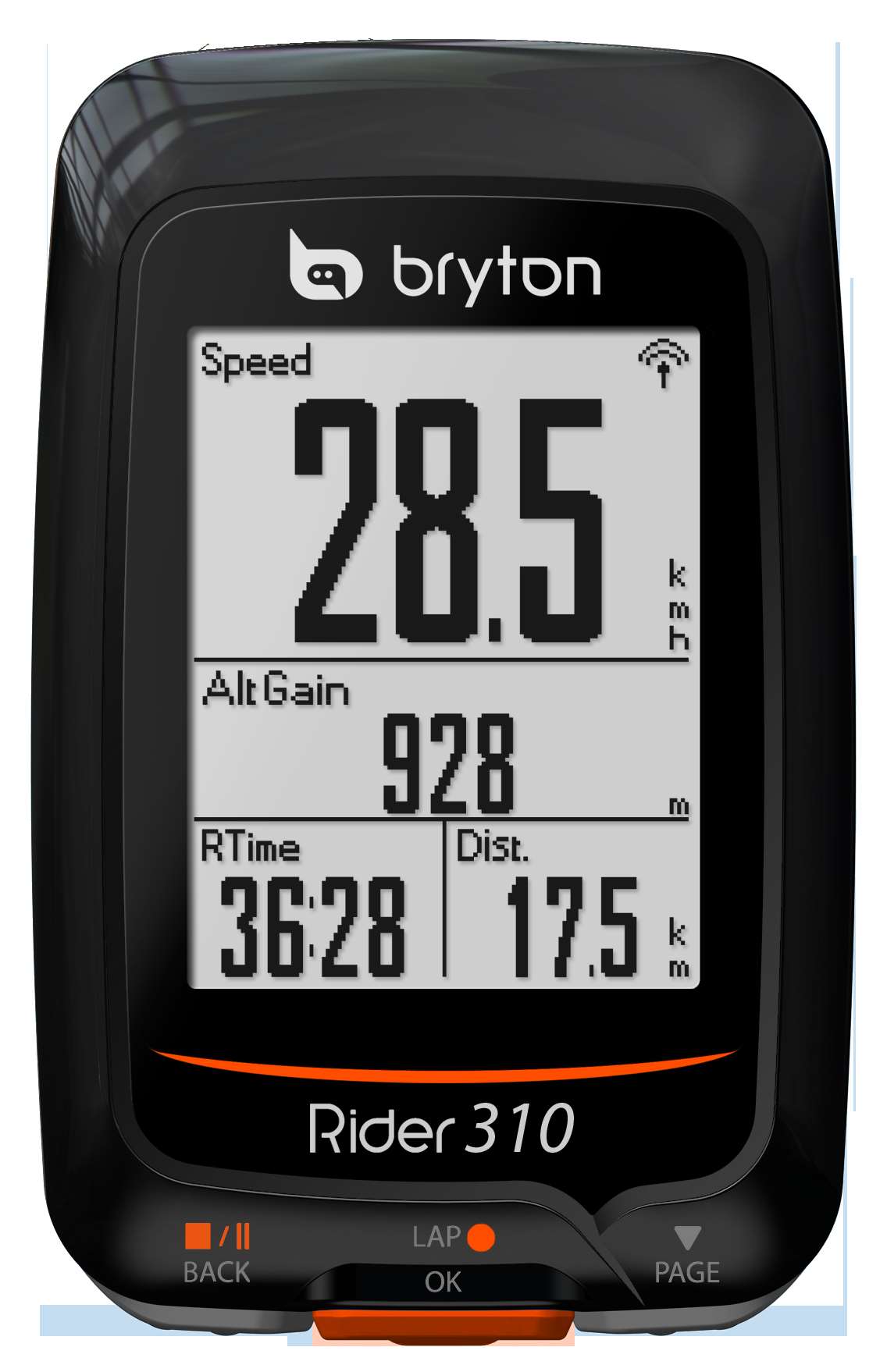
Out on the trail the Bryton’s display is big and crisp, easy to read, but the buttons, which are recessed on the bottom of the unit, were a little hard to press, particularly in full-finger gloves, compared with other units whose buttons stick out on the sides – I found I had to twist my hand around pretty awkwardly to get to them.
For those wishing to keep an eye on lots of data, there are up to 70 fields and up to five pages to display them (max. eight per page), plus two pages that just display your lap data. You can select an auto-scrolling option so the display rolls from one page to the next, eliminating any need to touch the unit except to record a lap (which can also be automated on distance or location, by the way). If this is your bag, it would negate most problems with the buttons.
I had a couple of other quibbles – many of which seem to originate in the fact that the Bryton has just three buttons, so some processes have to be stopped before others can be reached. There came the odd ride where I wanted to change data fields or other minor settings in the middle of my session. Unfortunately, the Rider 310 is geared to operate in two modes – riding and menu. In order to access the menu and setup, you need to exit the ride mode, hence stopping the ride and saving a separate file – before you can make your changes – then start a new one. This sort of thing might be rectified by a software update in the future, but it was a little frustrating, especially when I was still getting set up.
You can pause a ride easily and restart it using the same button (there’s also auto pause), but if you wish to stop a ride and turn the monitor off, you’re automatically resetting your device, so there’s no option to turn it off (say, to save power during an extended coffee or beer stop) then turn it back on again and continue where you left off.
Apart from this, the data I collected from the Bryton seemed as accurate as my Garmin’s, and the power figures it reported were totally consistent with my established zones and expectations. In three weeks of testing I did have one strange dropout of about 20 minutes of data, but I can’t guarantee I didn’t accidentally press a button and pause the device – I only discovered it later and I’m not sure it’s even worth mentioning.
Almost everyone considering a GPS device these days goes so with an eye on software compatibility. Most of us would use a third party platform to interpret our data, like Strava or Training Peaks or Today’s Plan, but some GPS manufacturers have successfully released their own platforms, such as Garmin Connect, which syncs automatically with your device and pairs with the above-mentioned software platforms. For many devices, all you have to do is plug the unit in (or not, if it’s wireless compatible), and wait for the kudos. Not so with the Bryton. You’ll have to plug the unit in and upload your files manually. It’s a 30-second task, but could get irksome, especially if you’re uploading a lot of files at once or use more than one platform. On the plus side, the Bryton records everything as .fit files, so there’s no pesky conversions to do.
Overall, it’s great to see Bryton enter the Aussie market. If they’d been around when my Garmin Edge 500 died about a year ago I would have bought one in a flash – their value for money far outweighs the few inconveniences – some of which may yet be ironed out in future updates.
HITS:
-
Excellent range of functions
-
Great value
MISSES:
The software isn't seamless
RRP:
Bryton 100 $99.95
Bryton 310 $149.95
FROM: ocbicycles.com.au

